Deserts are arid environments with scarce vegetation and little or no precipitation. Even the best deserts in the world have a harsh environment making it difficult for plants and animals to survive. But despite extreme conditions, most deserts can still support a wide range of flora and fauna.
These vast open landscapes welcome visitors with a sense of calm and seclusion and offer an outdoor experience with plenty of opportunities to explore. Each subregion is incredibly diverse, with its distinct beauty and features. So whether you’re a desert enthusiast or have plans to visit one soon, here are our pick of the 11 best deserts in the world to consider visiting when planning your next vacation.
Contents
Deserts Of The World
Top Tours
- Small Group 3-day Sahara Desert Tour – exotic desert journey from Marrakech to Fez.
- Thar Desert Camel Safari – with Folk Music and Overnight Camping.
- Namibian Highlights Safari – 15 Days/ 14 Nights desert experience of a lifetime!
11 Best Deserts In The World
1- Sahara Desert
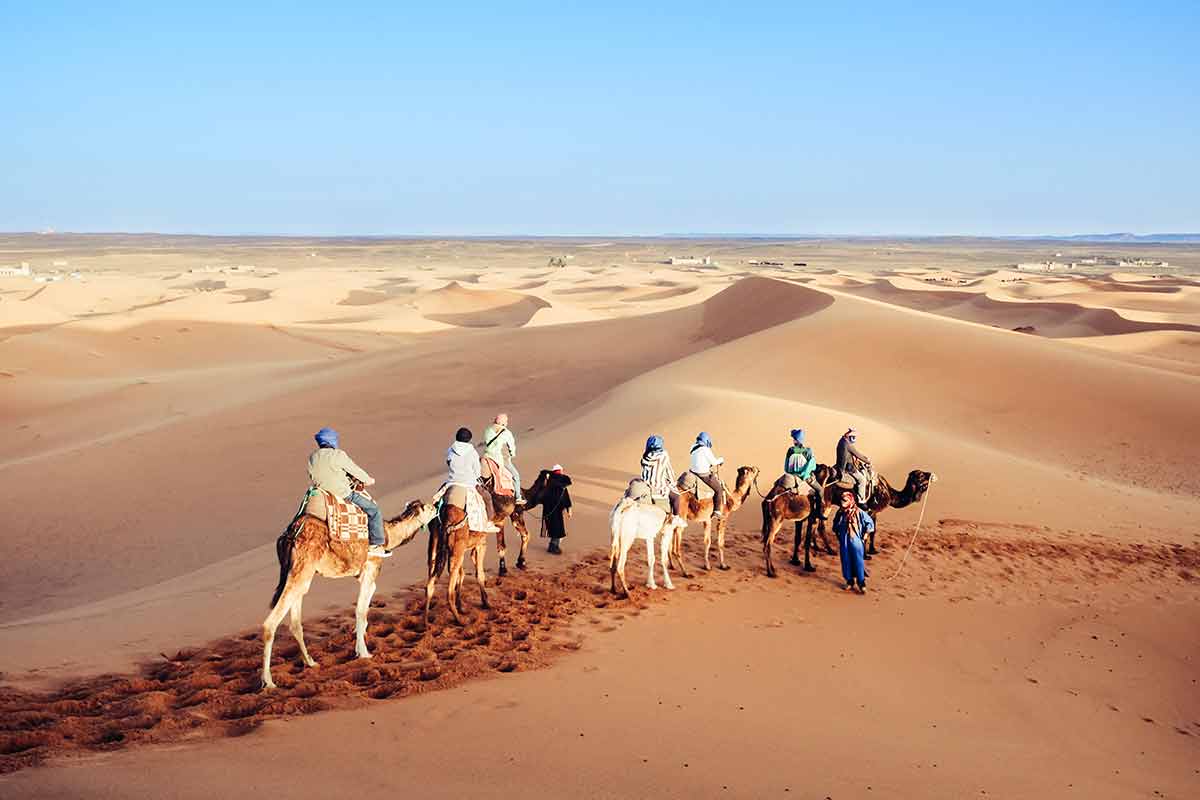
The Sahara Desert is in north-central Africa and covers 9.2 million square kilometres (3.6 million square miles), although the exact size changes over time due to the movement of the sands.
It is Africa’s largest and hottest desert, with summer temperatures reaching 50°C (122°F).
This vast desert covers much of Northern Africa, stretching across countries like Tunisia, Mali, Mauritania, Chad, Libya, Morocco, Niger, and Algeria.
The Mediterranean Sea and Atlas Mountains border this desert in the north while the Red Sea forms the eastern border and the Atlantic Ocean and the transitional Sahel region form the western and southern boundaries.
Although the living conditions in the Sahara Desert are harsh, its beauty is striking.
Dunes cover over a fourth of the desert’s surface and can rise to 180 m (590 feet) in some areas.
Despite its desolate appearance, this desert is home to baboons, hyenas, oryx, gazelles and deer.
The Sahara Desert, in reality, is divided into different regions, each with its temperature, rainfall pattern, and flora and fauna.
Also read: 20 Landmarks in Africa.
Recommended tours:
- Camel Ride and Overnight in Sahara Desert Camp
- Small Group 3-day Sahara Desert Tour: Marrakech to Fez
2- Thar Desert
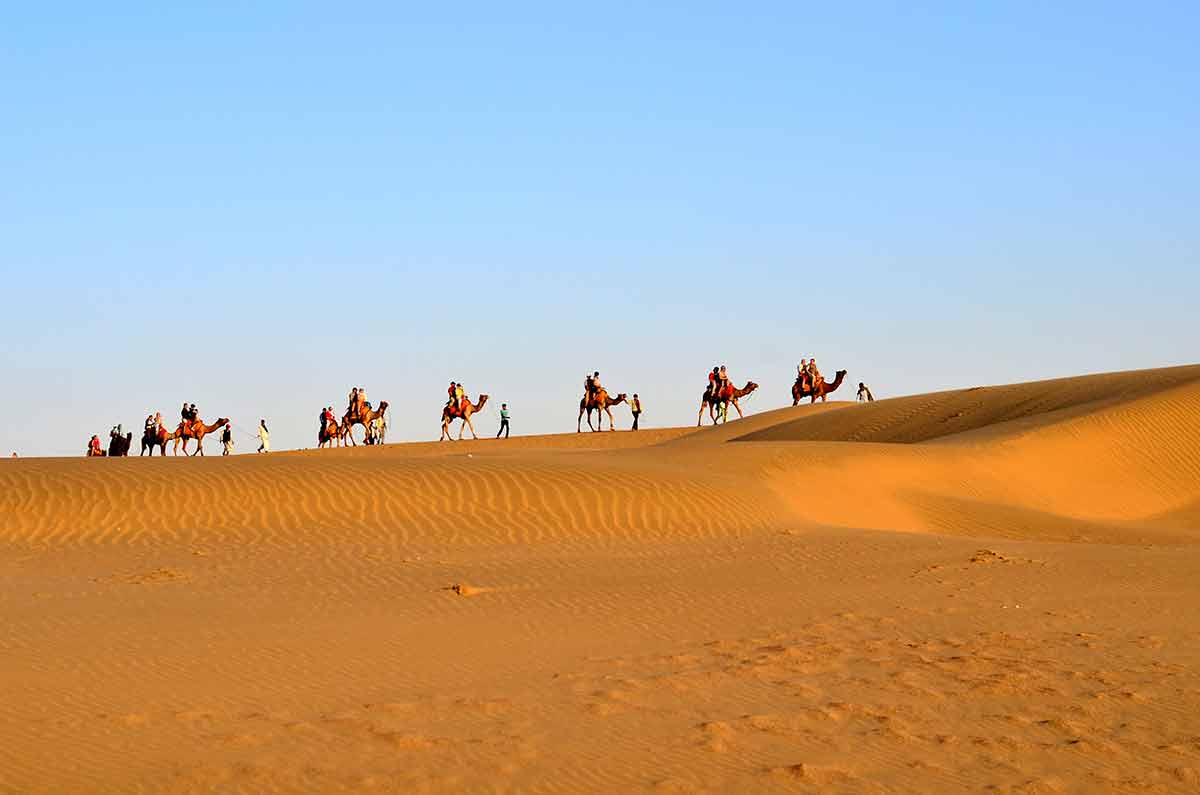
The Thar Desert is often called the Great Indian Desert as it divides India and Pakistan geographically.
85 per cent of the desert is located in India’s Rajasthan, Haryana, Punjab, and Gujarat states, while the rest is in Pakistan.
It is the 18th largest and 9th largest hot subtropical desert globally, spread across 200,000 square kilometres (77,000 square miles).
Most of the desert is covered with dunes fed by sediments from the coast and alluvial plain, with the remainder being made up of jagged rock formations and salt-lake bottoms.
Summer highs exceed 50°C (122°F), with winter as low as 0°C (32°F). It gets between 100 to 500 mm (4 to 20 inches) of rain from July to September but that can be unreliable.
The desert is also home to a wide range of wildlife, such as the blue bull, blackbuck, and the Indian gazelle (chinkara).
Also read: 28 Landmarks in India.
Recommended tour: Thar Desert Camel Safari with Folk Music and Overnight Camping
3- Gobi Desert
The Gobi Desert is Asia’s largest and fifth-largest desert, covering 1.3 million square km (500,000 square miles).
This desert spans from Southern Mongolia into Northwestern China and rapidly gains an average of 3,600 square kilometres (1,390 square miles) per year in Southern China.
It has an abnormally dry environment due to its location in the Himalayan rain shadow and the connecting peaks that prevent moisture-laden clouds from reaching the desert.
With its arid and near-barren landscapes, long-extinct life forms, and other unique features, the Gobi desert often gives visitors a surreal unworldly feeling.
There are five significant ecoregions within and around this desert: the Alashan Plateau, the Gobi Lakes Valley, the Junggar Basin, the Tian-shan range, and the Eastern Gobi desert steppe.
Visitors can go on camel rides and hikes around the famous dunes while learning about the local flora and fauna.
The Gobi Desert has a long and interesting history, and it’s the site of numerous fossil discoveries, including the world’s first-ever discovered fossilized dinosaur egg.
In the 13th and 14th centuries, the Gobi Desert was the seat of the enormous Mongol Empire, the world’s largest contiguous Empire at the time.
Also read: 25 Landmarks in China.
Recommended tour: 8 Days Tour: Gobi Desert And Kharkhorin
4- Atacama Desert
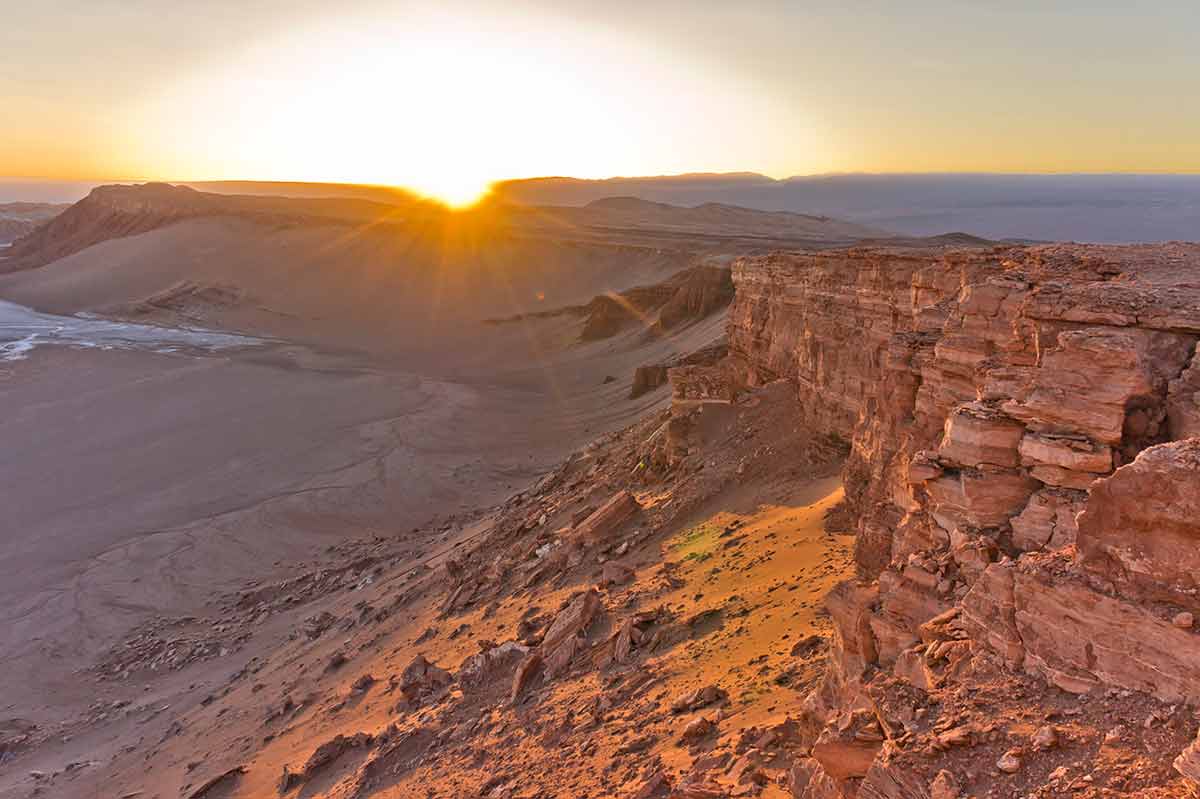
The Atacama Desert, located in Northern Chile, is a desert plateau between Cordillera de la Costa and the Andes Mountains for around 1,050 km (600 miles).
The region is home to some fantastic geological structures that have provided many research opportunities for geologists.
The Andes and Chilean coastal ranges block moisture from entering the desert, making the soil dry.
The Atacama is an excellent choice for those interested in observing the night sky thanks to the high altitude, beautiful skies, lack of pollution, and abundance of clear nights.
On average, the Atacama Desert receives less than a millimetre of rain per year, with some areas having never recorded any rainfall.
Although the Atacama Desert is exceptionally harsh, some organisms have adapted to this habitat and can thrive in it.
Over 500 species of flora and fauna thrive here, demonstrating how well they have adapted to this harsh environment.
Recommended tour: Self-Drive Experience in the Atacama Desert – 5 Days
5- Kalahari Desert
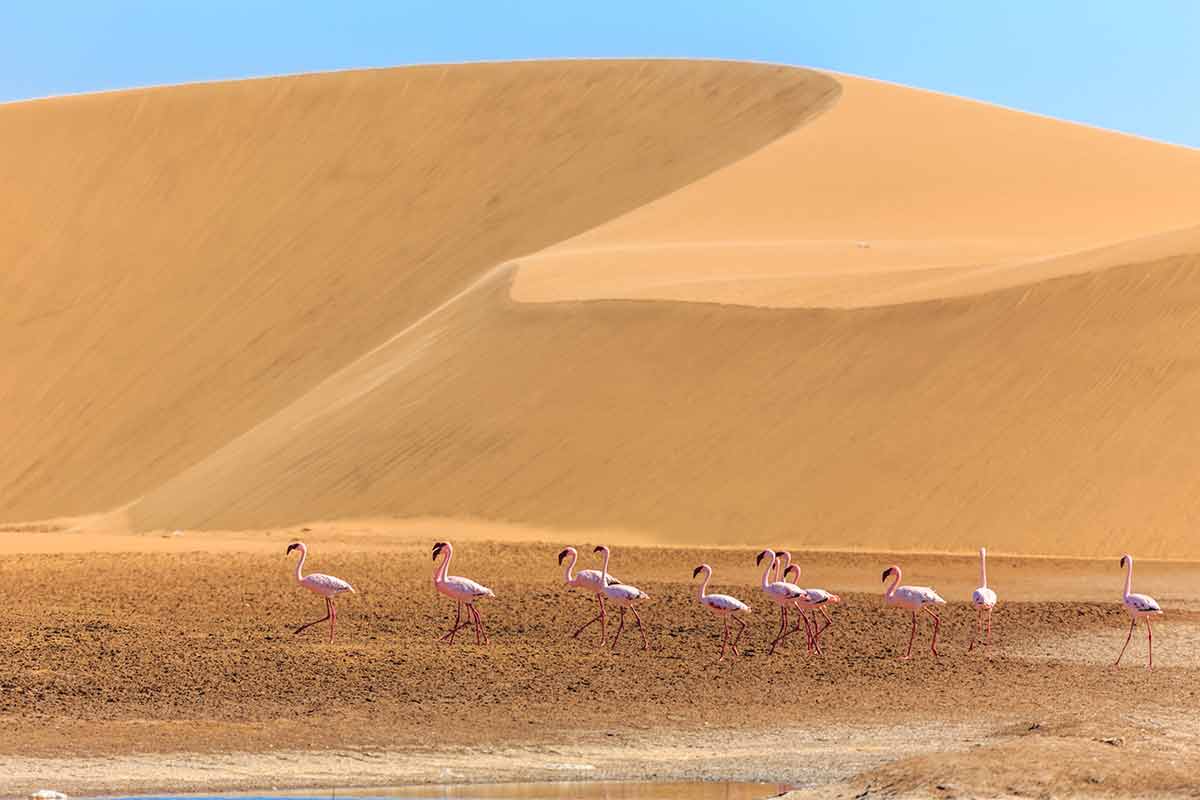
The Kalahari Desert is located in the heart of southern Africa, covering a distance of 930,000 square kilometres (360,000 square miles), and extending into Botswana, Namibia, and parts of South Africa.
This desert is the second-largest desert in Africa after the Sahara Desert and the sixth-largest worldwide.
It is an arid desert full of desert-adapted wildlife and breathtaking scenery, from the red dunes of the Kgalagadi transfrontier conservation area to the sparse grasslands of Central Kalahari in Botswana.
Some unique features include towering dunes and vast salt flats formed when ancient lakes dried up years ago.
Some people believe that the Kalahari is not a true desert because it receives more than 254 mm (10 inches) of rain annually; however, this annual rainfall of 100 to 500 mm (4 to 20 inches) allows vegetation to thrive here.
Wildlife such as the regal black-maned lion, African wild dogs, meerkats, and different species of birds and reptiles call the desert home.
According to some experts, it is also the best spot in the world to see cheetahs in action.
Recommended tours:
- 3-Day Desert Trail: Central Kalahari Game Reserve – WildCamping Safari
- Namibian Highlights Safari 15 Days/ 14 Nights
6- Arabian Desert
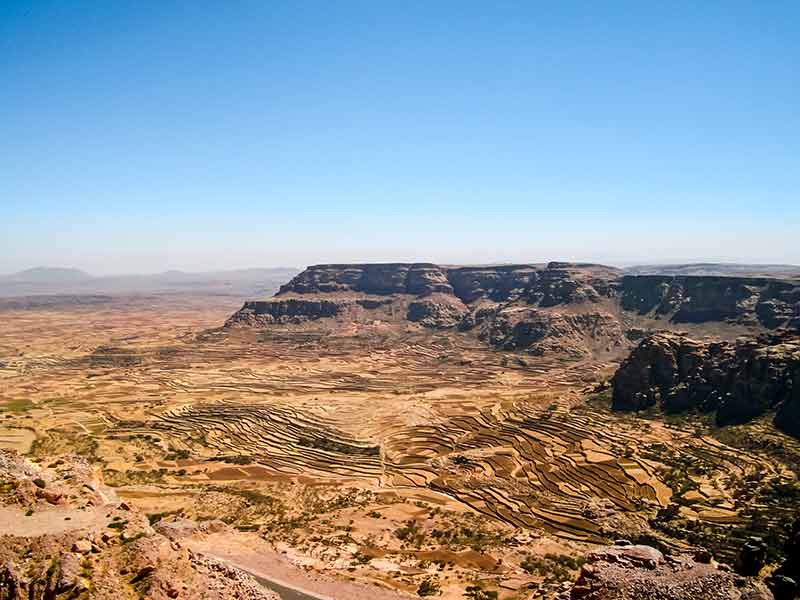
With an area of 2.3 million sqkm (900,000 square miles), the Arabian Desert is the world’s second-largest desert and the largest in Asia.
The desert is in Saudi Arabia, with the Syrian desert to the north, the Arabian Sea to the south, the Gulf of Oman to the east and the Red Sea to the west.
Here, there are numerous mountain ranges to explore. Mount Al-Nabi Shu’ayb in Yemen is the tallest of these, rising to 3,666 m (12,000 feet).
The Arabian Desert has some of the tallest dunes globally, reaching up to 300 m (984 feet).
The Arabian desert has a hot, dry climate and chilly nights.
This desert is home to various animal species, including the Arabian sand cat, mountain and reem gazelles, dromedary, and caracals.
The majority of the Arabian Desert is covered by Rub’al Khali, also known as the Empty Quarter, which spans 650,000 square kilometres (250,000 square miles).
During summer, temperatures in Rub’al Khal reach 36°C (97°F) on average, although it can get as high as 55°C (131°F).
Monthly precipitation varies from less than 50 mm (2 inches) in the south to more than 100 mm (4 inches) in the north, and you can have up to 12 months of no rain in some parts of the Rub’al-Khali.
Recommended tour: Desert Safari Experience – Arabian Safari
7- Negev Desert
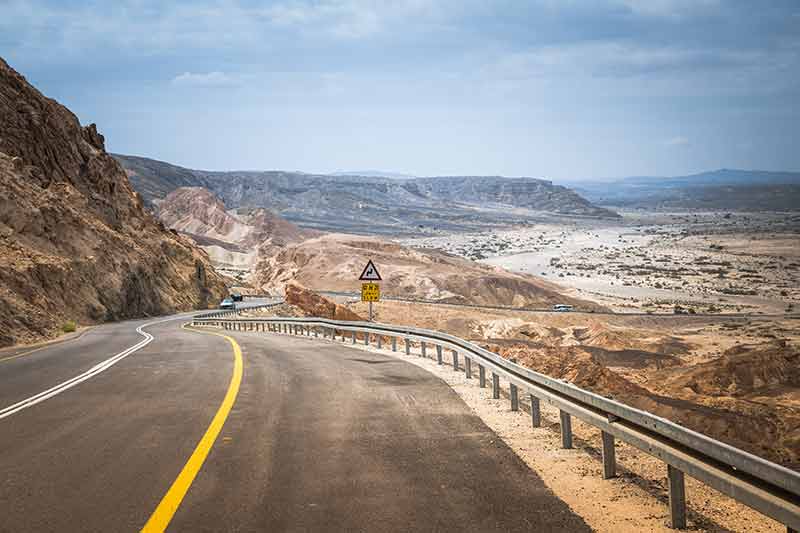
The Negev desert is a large and diversified region, covering a distance of 4,700 sqkm (2,590 square miles) of the entire geographical area of Israel.
Aside from natural attractions, the Negev Desert has several historic landmarks and archaeological sites.
Apart from the nomadic Bedouins who have lived here for centuries, other Israeli communities have found a home within the region.
This desert is not one with many dunes; rather, it is characterised by canyons and deep valleys.
Erosion craters known as makhteshim (desert craters) can only be found in the Negev and Egypt’s Sinai Peninsula.
A large range of other animals can be found in this desert, including the desert Hyrax and the Nubian Ibex.
The Negev Desert National Park offers excellent hiking opportunities and spectacular views of the region’s scenic plains, mountains, and valleys.
Visitors can learn more about the terrain and the people who live here by visiting one of the growing numbers of farms and guesthouses or engaging in outdoor activities around the region.
Recommended tour: Negev Mountains Private Tour from Tel Aviv
8- Sonoran Desert
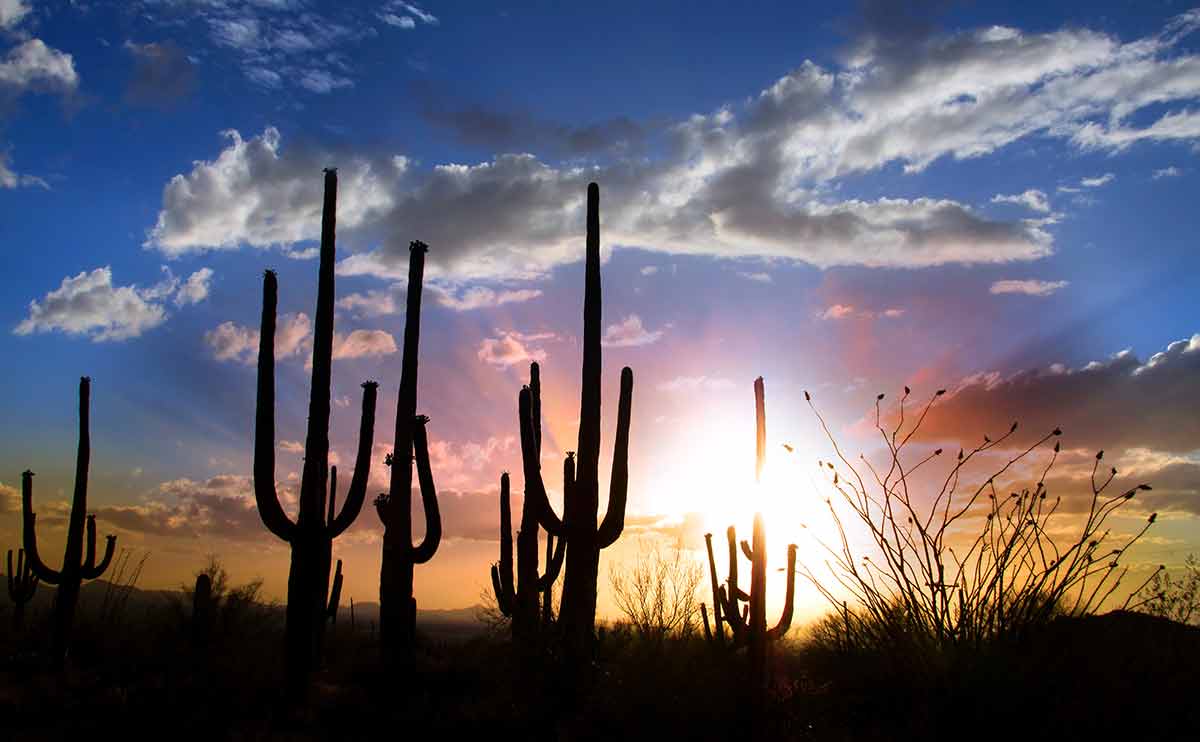
The Sonoran Desert is North America’s second-largest desert stretching for about 260,000 sqkm (100,000 square miles) across parts of Arizona, southern California and northern Mexico.
It’s the hottest North American desert, with summer temperatures rising above 48°C (118°F) in some parts.
This desert receives more rain than any other, annually averaging 250 to 350 mm (10 to 14 inches).
The amount of rainfall and the seasonality make this desert unique.
Most of the biota is tropical in origin, and when the winter rains are plentiful, a large population of annuals is produced, making up half of the species of flora in the area.
Compared to other deserts in North America, this one is known for having a significant biodiversity spread.
Legume trees and columnar cactus are two prominent plant types that set the Sonoran Desert apart from other North American deserts.
The Sonoran is home to several endemic species, including the saguaro cactus and the desert ironwood tree, which can survive for over a thousand years.
Recommended tour: Stunning Sunrise or Sunset Guided Hiking Adventure in the Sonoran Desert
9- Antarctic Desert
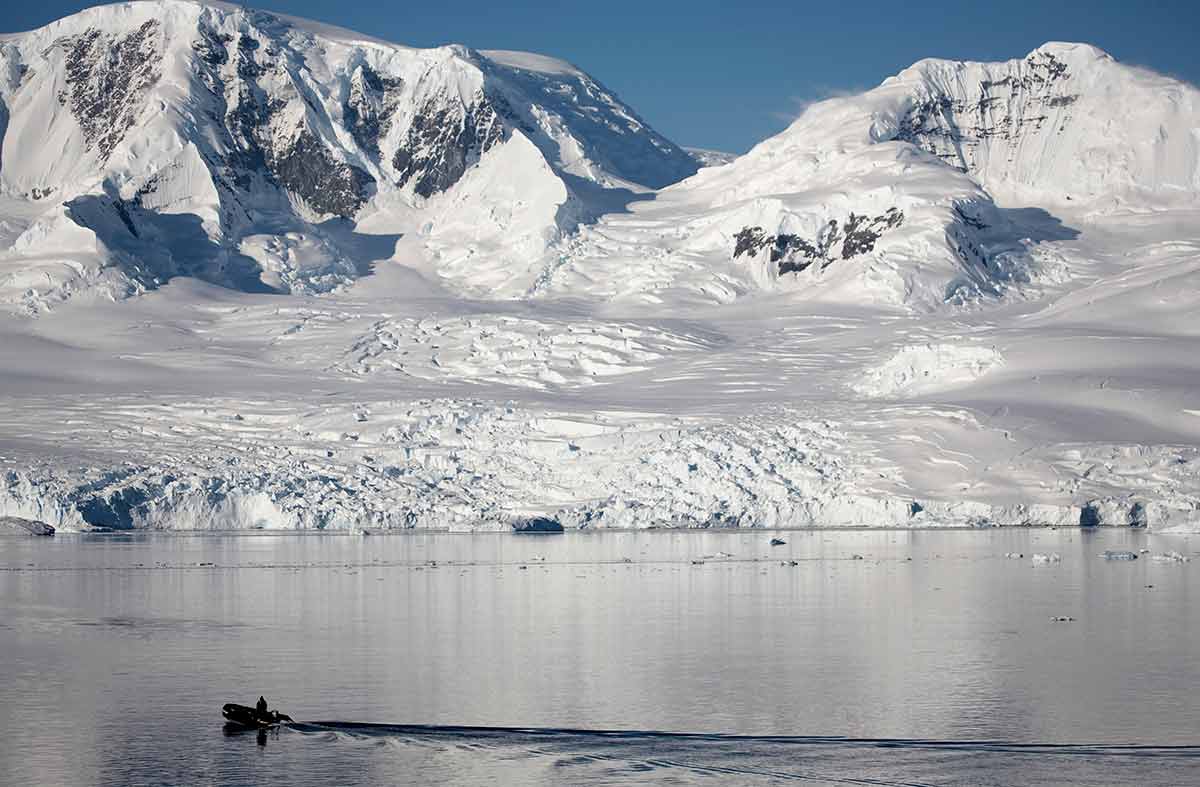
Antarctica is the world’s largest desert, covering an area of 14 million sqkm (5.4 million square miles).
Most people do not consider it a desert; however, it qualifies as one because it gets around 165 mm (6.5 inches) of precipitation each year.
The hottest temperature ever recorded is only 14.5°C (58°F); even more surprisingly, the Earth’s lowest temperature of – 94.7°C (– 202°F) was also recorded here.
Most of Antarctica is completely frozen, and 70 per cent of the world’s freshwater is found in this icy continent.
Additionally, the ice sheet in Antarctica is the world’s largest single mass of ice.
Despite being one of the world’s harshest environments, it’s also home to some incredible plants and wildlife.
Penguins, leopard seals, sea lions, seals, albatross, petrels and other birds live here.
Antarctica has no permanent residents and the only people who live here are the researchers who have set up temporary stations.
Also read: 21 Landmarks in Antarctica.
10- Chihuahuan Desert
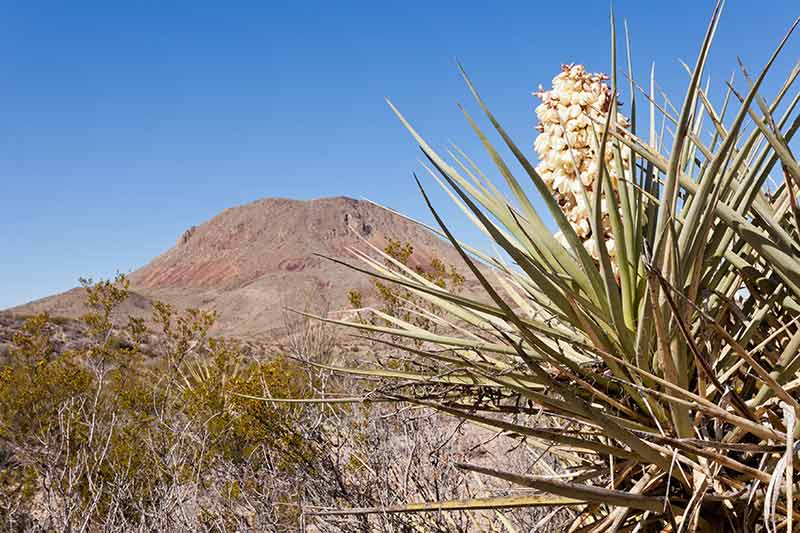
The Chihuahuan Desert is North America’s largest, with an area of around 647,500 sqkm (250,000 square miles).
The desert sprawls across southeastern Arizona, southern New Mexico, western Texas, and north-central Mexico.
Winters and evenings are frigid because of the high elevation of up to 1525 m (5,000 feet), while summer days can hit the thermometer at 38°C (100°F).
Different varieties of low shrubs, succulents, and small cacti make up the vegetation.
More than 130 mammal species, including the Mule deer, pronghorn, and the kit fox, call this desert home.
Additionally, the desert is home to North America’s biggest prairie dog colony.
The Chihuahuan Desert receives very little rainfall, but little streams, underground springs, and the Rio Grande River store and provide water for plants and animals.
Also read:
11- Salar de Uyuni
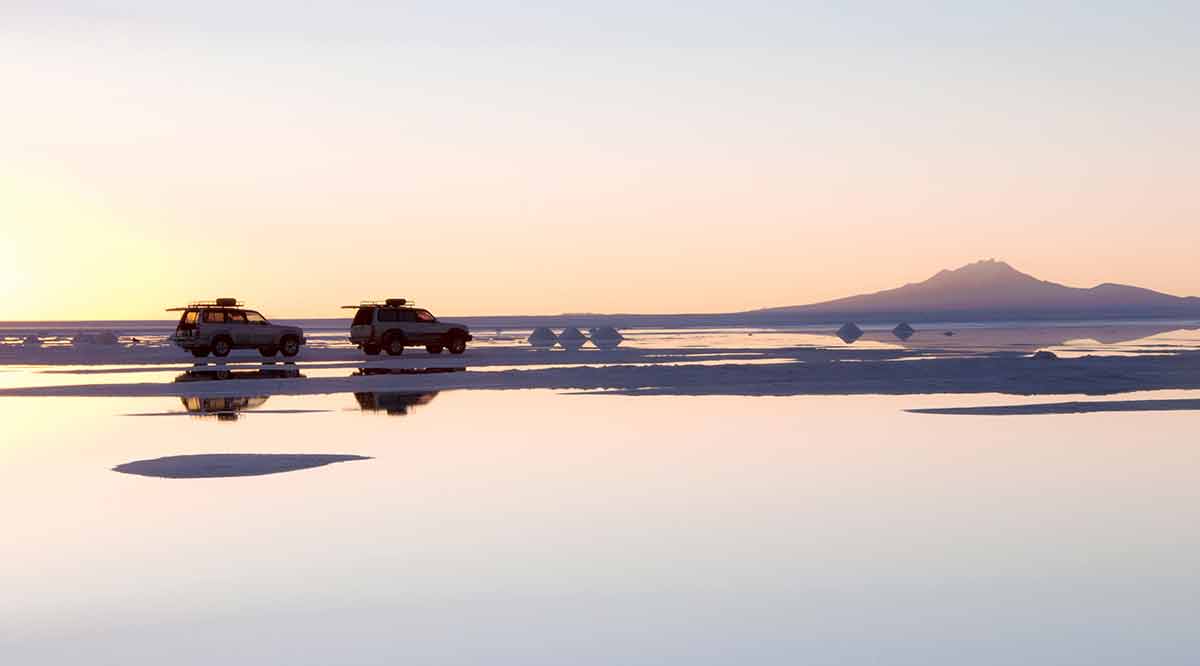
Salar de Uyuni is a popular attraction in Bolivia, offering one of the world’s most dramatic and magnificent landscapes.
Covering 10,000 sqkm (3,900 square miles), Salar de Uyuni is the world’s largest salt flat created when prehistoric lakes dried up thousands of years ago.
This place is estimated to hold 10 billion tons of salt, of which around 25,000 metric tons of salt are removed annually.
There are two separate seasons in the Salar de Uyuni.
Many conical mounds of salt dot the flats during the dry season, waiting to be sold or exported.
In the rainy season, a lake called Poopó overflows, creating a magical mirror effect that amazingly reflects the sun.
This makes the area look so surreal that tourists flock here for the unique photo opportunities the landscape provides.
Also read:
Recommended tour: 3-Days Tour to the Uyuni Salt Flat and Colored Lagoons +Sunset+Mirror Effect
Plan Your Trip

Rent A Car – Find the best car rental rates at Discover Cars. They compare car hire companies to provide you with the best deal right now.

Find A Hotel – If you’re curious about this article and are looking for somewhere to stay, take a look at these amazing hotels.

